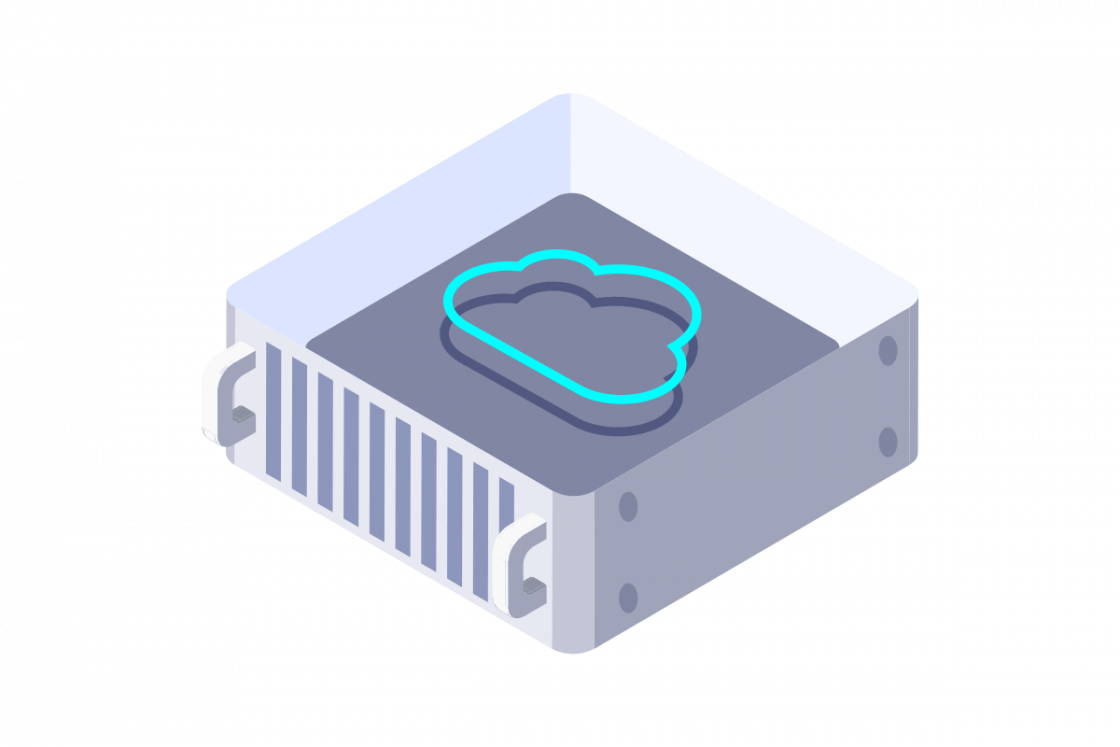What is Edge Storage?
Edge storage refers to the practice of storing data closer to the source where it's generated, rather than relying solely on centralized cloud storage or a distant data center for a request. It's a key component of edge computing, which emphasizes the processing job and storing data at the "edge" of the network, closer to the devices and users that create and consume it.
This proximity offers significant advantages in terms of latency, bandwidth usage, and data sovereignty.
Traditionally, data generated by devices or applications was transmitted to a central location for storage and the processing job. With the rise of IoT, mobile devices, and data-intensive applications, this centralized approach can become a bottleneck.

Edge storage addresses this by distributing storage resources across the network, placing them strategically closer to the data source. This can involve using storage devices embedded within edge servers, gateways, or even directly on the devices themselves.
Data Storage in Edge Computing
Edge computing necessitates a shift in how we think about data storage. Instead of a centralized repository, edge storage involves a distributed architecture where data resides closer to its point of origin.
This distributed nature presents unique challenges and opportunities, impacting everything from data management and security to file system choices. Edge storage isn't about replacing the cloud; it's about strategically placing storage resources where they are most effective, creating a hybrid approach.
It often means that companies started dealing with smaller, more resource-constrained devices at the edge, requiring careful consideration of storage capacity, power consumption, and network connectivity.
File Systems for Edge Storage
The choice of disk file system is crucial for effective edge storage. Traditional file systems designed for large, centralized storage systems may not be ideal for the resource-constrained and often intermittent connectivity of edge environments. Several factors influence the selection of a suitable file system:
- Footprint: Edge devices often have limited storage capacity. A file system with a small footprint is essential to minimize resource usage for every request.
- Durability and reliability: While some data may be transient, other data needs to be persistently stored. The file system should offer mechanisms for data integrity and recovery, even in the face of unexpected power outages or network disruptions.
- Scalability: As the number of edge devices and the volume of data generated increase, the file system should be able to scale efficiently.
- Network awareness: In some cases, the file system may need to be aware of the network connectivity and be able to handle intermittent connections or data share and synchronization with a central server.
- Security: Protecting data at the edge is paramount. The disk file system may need to support encryption or access control mechanisms.
When considering edge storage file systems, the speed at which devices can read data becomes paramount. Applications often need to read sensor data in real-time, read configuration files for immediate execution, or read stored logs for rapid analysis.
To ensure efficient operation, systems must be started to be optimized to read large volumes of data quickly, read frequently accessed files with minimal latency, and even read fragmented data without significant performance degradation. The file system impacts this for every request. Some disk file systems commonly considered for edge storage include:
- Lightweight File Systems: FAT32, exFAT, and similar file systems are often used for simpler edge devices due to their low overhead and compatibility. However, they may lack advanced features like journaling and robust error recovery.
- Embedded File Systems: YAFFS2, SPIFFS, and LittleFS are specifically designed for a product like embedded systems and offer features like wear leveling for flash memory, which is commonly used in edge devices.
- Distributed File Systems: For more complex edge deployments, distributed file systems like Ceph or GlusterFS might be considered. These systems can provide scalability and redundancy across multiple edge nodes.
A common approach is to use a standard file system like ext4 locally on the edge device and then implement a separate synchronization mechanism to transfer data to a central server or cloud storage.
The optimal disk file system for edge storage depends heavily on the specific requirements of the application, the characteristics of the edge devices, and the overall edge architecture. Careful evaluation and testing are essential to ensure the chosen file system meets the performance, reliability, and security needs of the edge deployment.
Use Cases for Edge Storage
Edge storage is finding an axis of applications across a wide range of industries and use cases, driven by the need for a faster data processing job, reduced latency, and improved bandwidth efficiency. By storing data closer to the source, edge storage enables real-time insights and actions, opening up new possibilities for innovation and optimization.
Edge Storage in IoT Devices
The Internet of Things (IoT) is a prime example of where edge storage plays a crucial role in a product. IoT devices, from sensors and actuators to connected vehicles and smart home appliances, generate vast amounts of data. Storing and processing this data at the edge offers several advantages:
- Reduced latency: For time-sensitive applications like digital industrial automation or autonomous vehicles, minimizing latency is critical to free up performance. Edge storage enables faster data access and processing, enabling real-time control and decision-making. Imagine a factory floor where sensors detect a potential equipment failure. Edge storage allows for immediate analysis and action, preventing costly downtime.
- Bandwidth optimization: Transmitting all IoT data to a central cloud can strain network bandwidth. Edge storage reduces the amount of data required to be transmitted by processing and filtering data locally. Only relevant or aggregated data is then sent to the cloud, saving bandwidth and cost.
- Offline operation: In many IoT deployments, network connectivity can be intermittent or unreliable. Edge storage allows devices to continue operating and collecting data even when disconnected from the network. The data can then be synchronized with the cloud when connectivity is restored.
- Data privacy and security: Storing sensitive data locally at the edge can enhance privacy and security. This is particularly important for applications like healthcare or smart homes where user data needs to be protected.
As the number of IoT devices grows, managing and processing the data becomes increasingly challenging. Edge storage helps distribute the workload and enables more scalable IoT deployments.
Edge Storage in Cloud Computing
While edge storage is often seen as an alternative to cloud storage, it actually complements the cloud computing product in many scenarios and can be the axis around which flexible storage revolves.
By processing and storing data at the edge, edge storage can reduce the load on cloud infrastructure. This can lead to cost savings and improved performance for cloud-based applications.
Edge storage facilitates the development of hybrid cloud architectures where data is processed and stored both at the edge and in the cloud. This allows for greater flexibility and optimization based on application requirements.
For cloud applications that require low latency or high bandwidth, edge storage can improve performance by bringing data closer to the users. This is particularly relevant for applications like online gaming, video streaming, and augmented reality.
Edge storage can be used as the axis in a multi-tiered storage strategy. Frequently accessed data can be stored at the edge for fast access, while less frequently used data can be moved to the cloud for long-term storage and archiving.
In summary, edge storage is not about replacing the cloud but rather about extending its reach and capabilities. By strategically placing storage resources at the edge, organizations can create more efficient, scalable, and responsive applications, unlocking the full potential of data-driven innovation.
Benefits of Edge Storage
Edge storage offers a compelling set of advantages that address the evolving needs of modern data management. By distributing storage resources closer to the data source, it makes free improvements in performance, cost-efficiency, security, and scalability.
- Reduced latency: One of the most significant benefits of edge storage is the reduction in latency. By storing digital data closer to the point of origin, access times are significantly decreased, leading to faster application performance and real-time decision-making. This is crucial for applications like industrial automation, autonomous vehicles, and real-time analytics.
- Lower bandwidth costs: Edge storage can significantly reduce the amount of data required to be transmitted to a central cloud or data center. By doing the processing job and filtering data locally, only essential information is sent, minimizing bandwidth usage and associated costs.
- Improved performance: Faster data access translates to improved application performance. Edge storage enables quicker response times, smoother user experiences, and the ability to handle data-intensive workloads more efficiently.
- Enhanced data sovereignty and compliance: Storing data locally at the edge can help organizations comply with data sovereignty regulations and privacy laws. This is particularly important for sensitive data required to be kept within specific geographical boundaries.
- Increased reliability and availability: Edge storage can improve the reliability and availability of applications by reducing dependence on a single, centralized data center. Even if the connection to the cloud is disrupted, edge devices can continue to operate and access locally stored data.
Edge storage can be scaled more easily than the centralized storage version. As the number of devices and the volume of data increase, additional edge nodes can be added to the network, distributing the workload and ensuring consistent performance.
By reducing bandwidth usage and offloading cloud resources, edge storage can lead to significant cost savings. Organizations can optimize their storage infrastructure and avoid over-provisioning cloud resources.
Enhanced Data Security in Edge Storage
While edge storage offers many benefits, security remains a critical concern. Distributing data across multiple edge locations can introduce new vulnerabilities if not properly addressed. However, edge storage can also offer enhanced security benefits when implemented thoughtfully:
By limiting the amount of sensitive data transmitted to the cloud, edge storage can reduce the attack surface and minimize the risk of large-scale data breaches. Storing data locally at the edge can make it more difficult for attackers to access and exfiltrate large volumes of information.
Edge storage also allows for more granular control over data access, enabling stricter access control policies at the edge, limiting access to sensitive data based on user roles and device permissions. Keeping sensitive data within specific geographical boundaries can value data security and help organizations comply with data sovereignty regulations.
Edge storage facilitates data localization, ensuring that sensitive data remains within a defined perimeter. Data encryption can be implemented at the edge to protect sensitive information both in transit and at rest, preventing unauthorized access even if an edge device is compromised.
Securing edge devices themselves is crucial for protecting data at the edge, requiring robust device management practices, including secure boot, firmware updates, and device authentication. Edge computing enables data to be processed and filtered locally, reducing the amount of sensitive data that needs to be stored and transmitted, further enhancing security.
OVHcloud and Edge Storage
Discover OVHcloud's diverse cloud storage services, designed to meet the evolving needs of today’s cloud solutions. From minimizing latency with Local Zone Storage to scalable Object Storage for unstructured data, our services provide the performance, reliability, and accessibility you require:

Local Zone Storage
OVHcloud Local Zone Storage brings your data closer to your users, minimizing latency and maximizing performance. Ideal for applications requiring rapid data access, this solution ensures your critical information is readily available where you need it most. Experience enhanced responsiveness and streamlined workflows with our geographically optimized storage.

Object Storage
OVHcloud Object Storage provides scalable and reliable storage for your unstructured data. Perfect for backups, archives, and media content, this solution offers cost-effective storage with easy accessibility. Benefit from high durability and availability, ensuring your data is always protected and accessible.

Enterprise File Storage
Empower your business with OVHcloud's Enterprise File Storage, a robust solution designed for organizations demanding high performance, scalability, and security. Store and manage your critical data with ease, leveraging our reliable infrastructure. Benefit from flexible capacity options, ensuring your storage grows with your business needs.